
Linear algebra is the branch of mathematics concerning linear equations such as:
In mathematics, hypercomplex number is a traditional term for an element of a finite-dimensional unital algebra over the field of real numbers. The study of hypercomplex numbers in the late 19th century forms the basis of modern group representation theory.
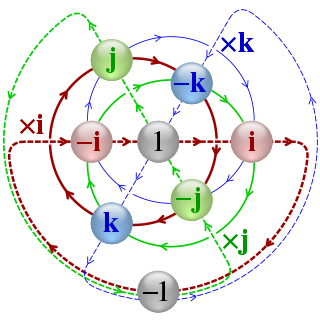
In mathematics, the quaternion number system extends the complex numbers. Quaternions were first described by the Irish mathematician William Rowan Hamilton in 1843 and applied to mechanics in three-dimensional space. Hamilton defined a quaternion as the quotient of two directed lines in a three-dimensional space, or, equivalently, as the quotient of two vectors. Multiplication of quaternions is noncommutative.
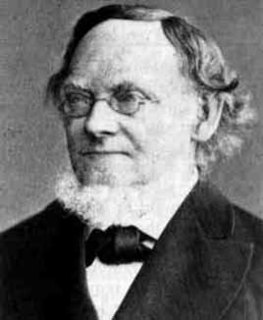
Hermann Günther Grassmann was a German polymath, known in his day as a linguist and now also as a mathematician. He was also a physicist, general scholar, and publisher. His mathematical work was little noted until he was in his sixties.
Multilinear algebra is a subfield of mathematics that extends the methods of linear algebra. Just as linear algebra is built on the concept of a vector and develops the theory of vector spaces, multilinear algebra builds on the concepts of p-vectors and multivectors with Grassmann algebras.
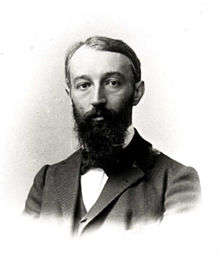
Eduard Study, more properly Christian Hugo Eduard Study, was a German mathematician known for work on invariant theory of ternary forms (1889) and for the study of spherical trigonometry. He is also known for contributions to space geometry, hypercomplex numbers, and criticism of early physical chemistry.
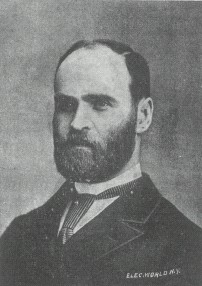
Alexander Macfarlane FRSE LLD was a Scottish logician, physicist, and mathematician.
In abstract algebra, the algebra of hyperbolic quaternions is a nonassociative algebra over the real numbers with elements of the form
Alexander McAulay was the first professor of mathematics and physics at the University of Tasmania, Hobart, Tasmania. He was also a proponent of dual quaternions, which he termed "octonions" or "Clifford biquaternions".
In abstract algebra, the split-quaternions or coquaternions form an algebraic structure introduced by James Cockle in 1849 under the latter name. They form an associative algebra of dimension four over the real numbers.
In mathematics, a versor is a quaternion of norm one. The word is derived from Latin versare = "to turn" with the suffix -or forming a noun from the verb. It was introduced by William Rowan Hamilton in the context of his quaternion theory.
Cargill Gilston Knott FRS, FRSE LLD was a Scottish physicist and mathematician who was a pioneer in seismological research. He spent his early career in Japan. He later became a Fellow of the Royal Society, Secretary of the Royal Society of Edinburgh, and President of the Scottish Meteorological Society.
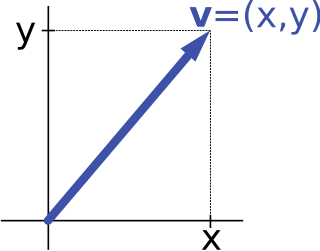
In mathematics and physics, vector notation is a commonly used notation for representing vectors, which may be Euclidean vectors, or more generally, members of a vector space.

In mathematics, quaternions are a non-commutative number system that extends the complex numbers. Quaternions and their applications to rotations were first described in print by Olinde Rodrigues in all but name in 1840, but independently discovered by Irish mathematician Sir William Rowan Hamilton in 1843 and applied to mechanics in three-dimensional space. They find uses in both theoretical and applied mathematics, in particular for calculations involving three-dimensional rotations.

A History of Vector Analysis (1967) is a book on the history of vector analysis by Michael J. Crowe, originally published by the University of Notre Dame Press. As a scholarly treatment of a reformation in technical communication, the text is a contribution to the history of science. In 2002, Crowe gave a talk summarizing the book, including an entertaining introduction in which he covered its publication history and related the award of a Jean Scott prize of $4000. Crowe had entered the book in a competition for "a study on the history of complex and hypercomplex numbers" twenty-five years after his book was first published.
Charles Jasper Joly was an Irish mathematician and astronomer who became Royal Astronomer of Ireland.
In mathematics and physics, vector is a term that refers colloquially to some quantities that cannot be expressed by a single number, or to elements of some vector spaces.
In mathematics, hypercomplex analysis is the basic extension of real analysis and complex analysis to the study of functions where the argument is a hypercomplex number. The first instance is functions of a quaternion variable, where the argument is a quaternion. A second instance involves functions of a motor variable where arguments are split-complex numbers.
The subject of physical mathematics is concerned with physically motivated mathematics and is considered by some as a subfield of mathematical physics.

Hüseyin Tevfik Pasha was a military adjutant representing Turkey in the purchase of foreign rifles. He is remembered for his Linear Algebra which outlined some vector algebra including a "special perpendicular" and properties of curves. The book title was precocious since the early vector algebra was generalized in vector space, and this concept later produced linear algebra. He is known as Tawfiq Pasha of Vidin or as Vidinli Huseyin, Tawfiq Pasha in Turkish literature. He served as Envoy of the Ottoman Empire to the United States.